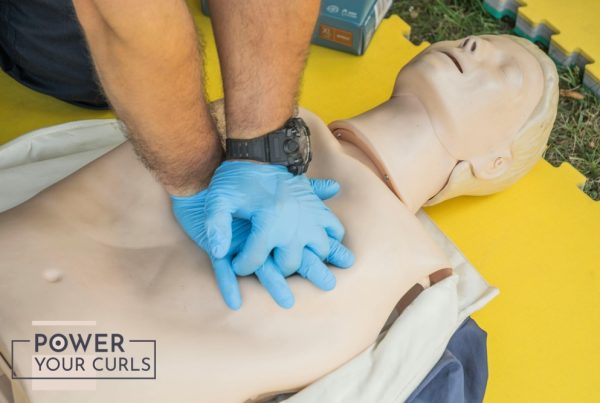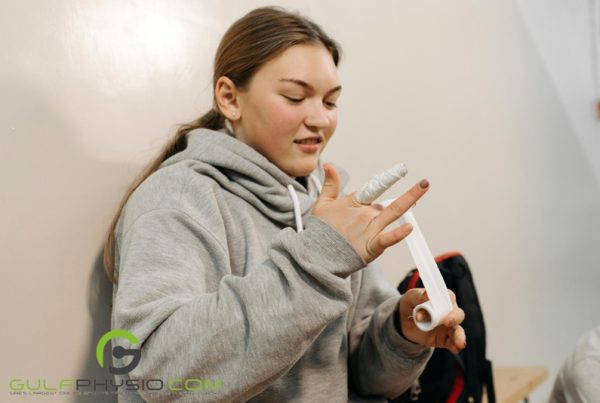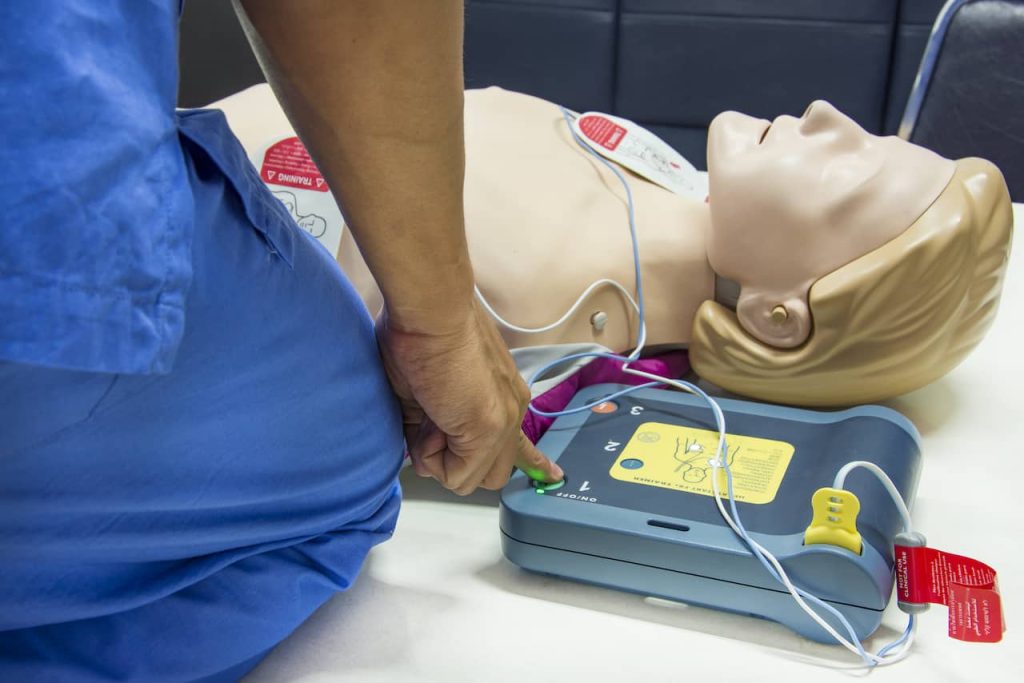
Keeping your heart pumping is your body’s routine. Whatever you do in a day, it goes along with you for the ride. Though, what happens if something disrupts that routine in any way? During a crisis or accident, it’s crucial to have AEDs nearby and ready.
In a previous article, we discussed using and choosing the right AED. In this supplementary piece, we’ll delve into its accessories, parts, and how to keep this life-saving tool up to date.
AEDs and Their Accessories
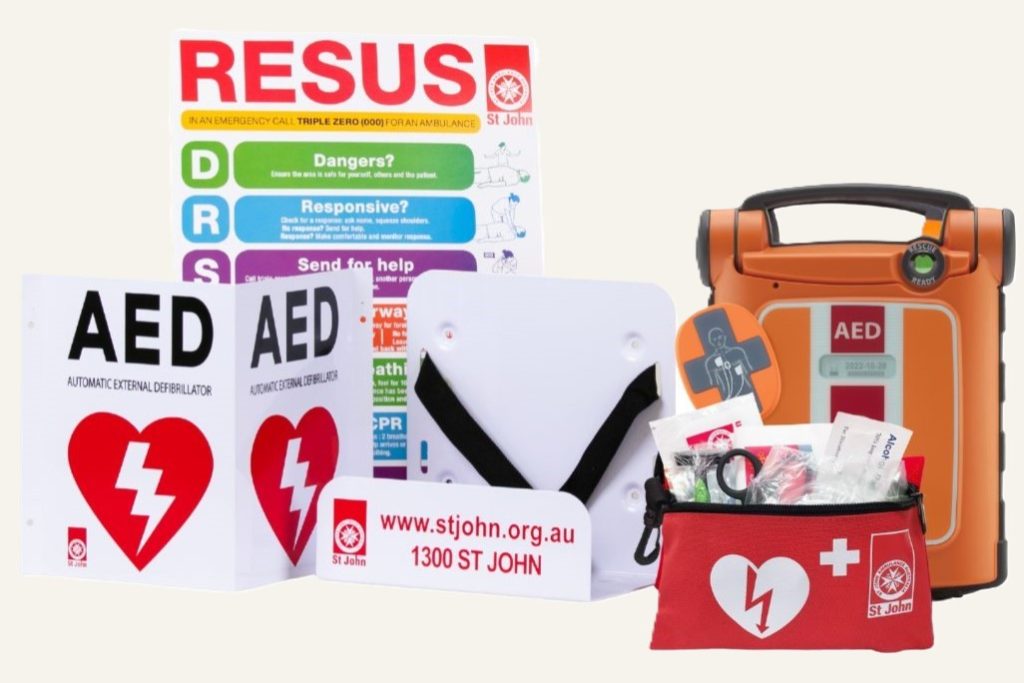
AEDs (Automated External Defibrillators) are vital compact devices that come with several accessories, including the following:
- AED standard carrying case
- AED electrode pads, and possibly an extra set
- AED battery, and possibly an extra one
- Fast Response Kit (FRK) consisting of:
- Pouch for materials
- Hypoallergenic nitrile gloves (two pairs)
- Extra-absorbent paper towel (large)
- Pocket breathing mask
- Paramedic scissors
- Chest hair razor
Depending on the set, you can buy extra accessories in addition to your AED purchase. These optional accessories are as follows: :
- Child/infant AED pads
- AED cabinet
- AED wall sign
Why Do You Need These Optional Accessories for AEDs?
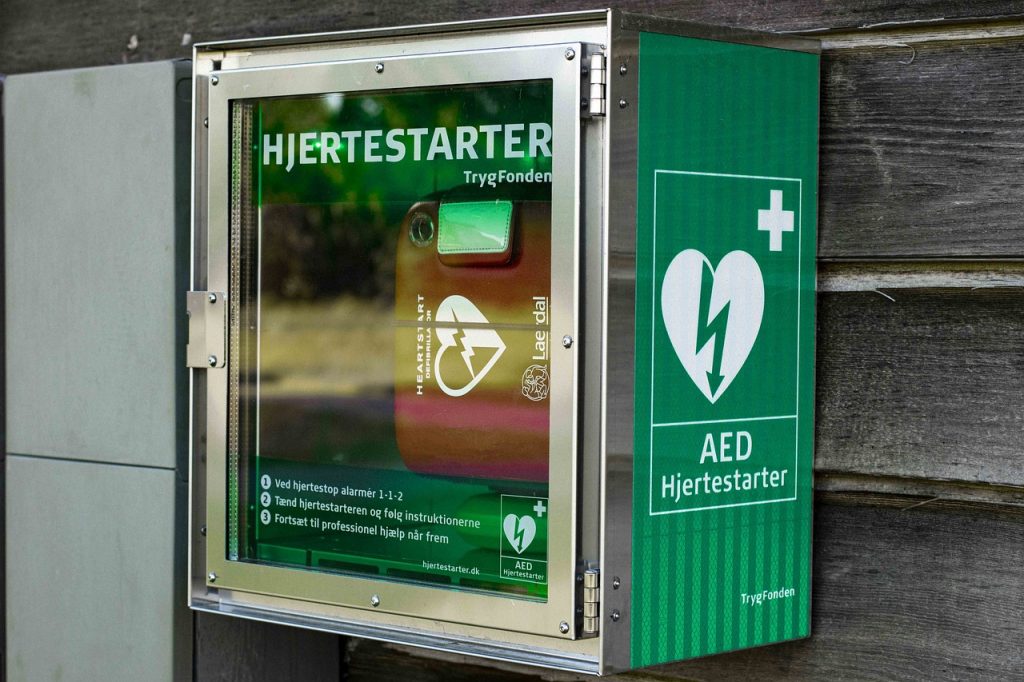
Additional accessories for AEDs are essential for different circumstances, like electrode pads. Some AEDs have universal electrode pads for children and adults, while others make them separate. It would be best to have child pads in preparation for any emergency.
Apart from electrode pads, some establishments are required to have an AED cabinet and wall signage. Public places and workplaces need accessible AEDs with visible signage at around one (1) device per 50 people. An AED cabinet is the same as in hospitals and pharmacies called controlled medication cabinets.
An AED cabinet has a built-in alarm-and-light system, much like a controlled medication cabinet. Instead of coding a breach, this signals the people in the vicinity that an emergency is nearby. The cabinet also ensures that the AED is well-protected and within reach. As for proper signage, anybody can readily access this medical first aid device.
The Parts of an AED
After the accessories, time to learn about what makes an AED as essential as it is. A device like this is more than just the sum of its parts. Each component works together as a unit to save lives. Learn all about how an AED works through each of its parts, which are listed below, starting with the control panel:
Control Panel
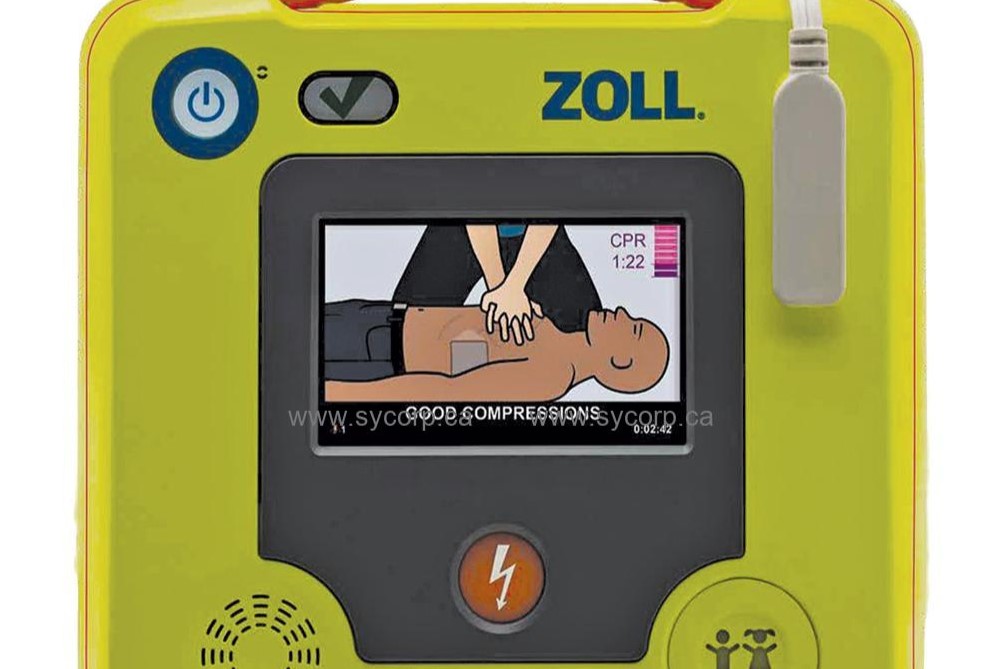
The control panel on an AED typically has a power button, display screen, and shock button. The display screen shows an easy guide on using an AED plus the patient’s heart rhythm. A layperson can easily use an AED in a crisis with a step-by-step procedure ready.
A few defibrillators have additional commands for disposable/replaceable electrodes or internal paddles. Some can even have charge buttons or energy select controls for manually-delivered shocks.
Speaker
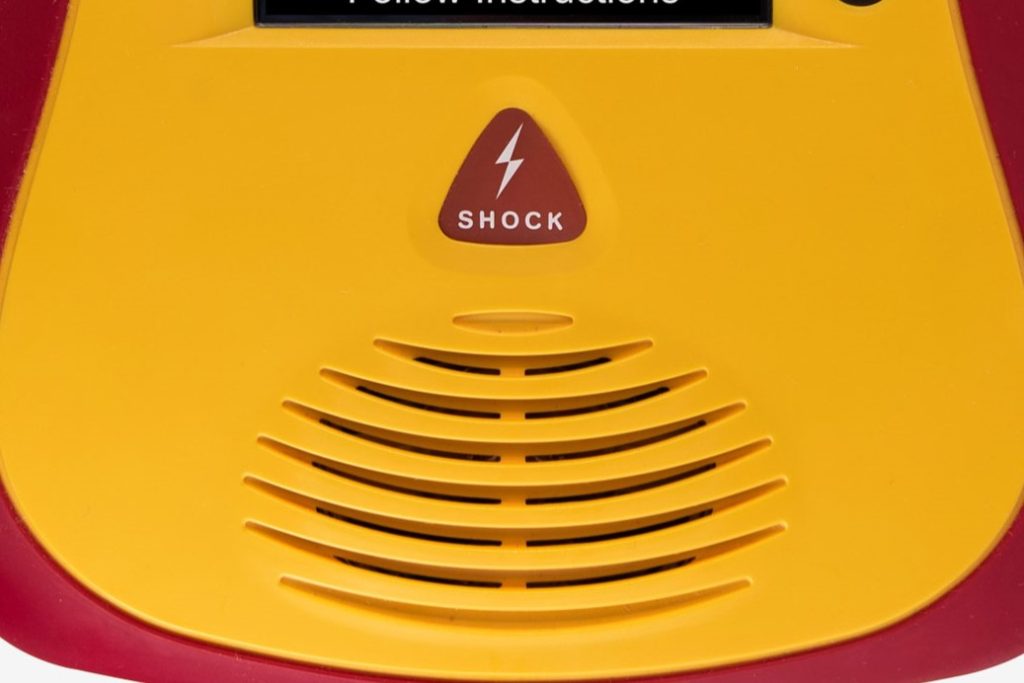
Some AEDs do have speakers built into them for voice prompts and signals. These audible signs instruct the user through each step of using an AED.
Capacitor
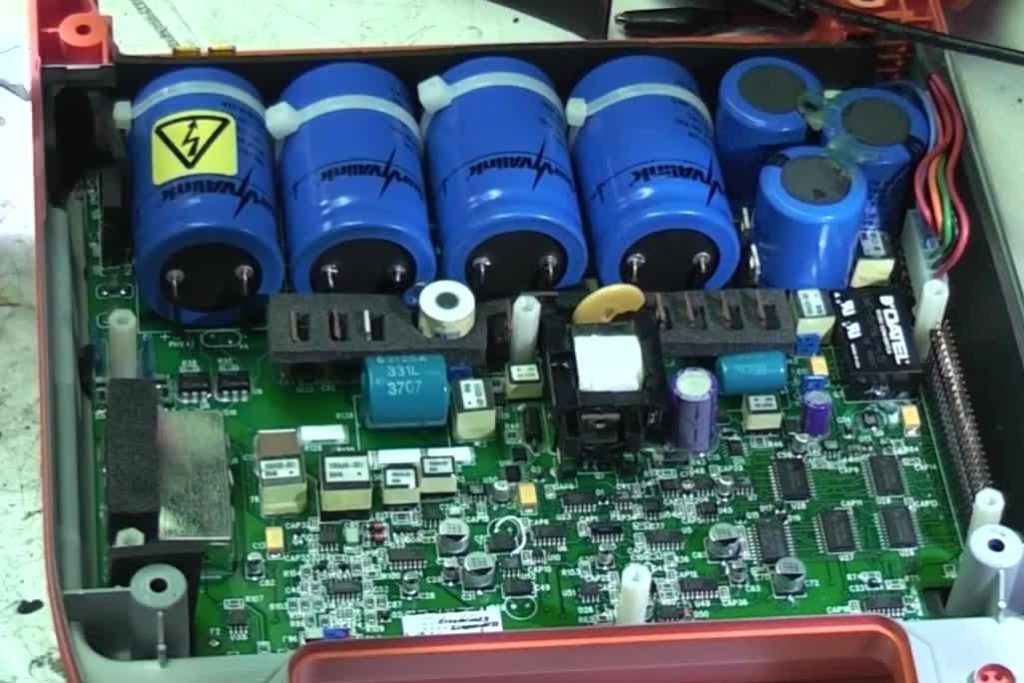
For life-saving devices like AEDs, these need large enough capacitors to hold as much energy as possible. These everyday electrical components come in various sizes. They regulate the release of energy in an AED to save a person’s life.
Electrical Circuit/Microprocessor
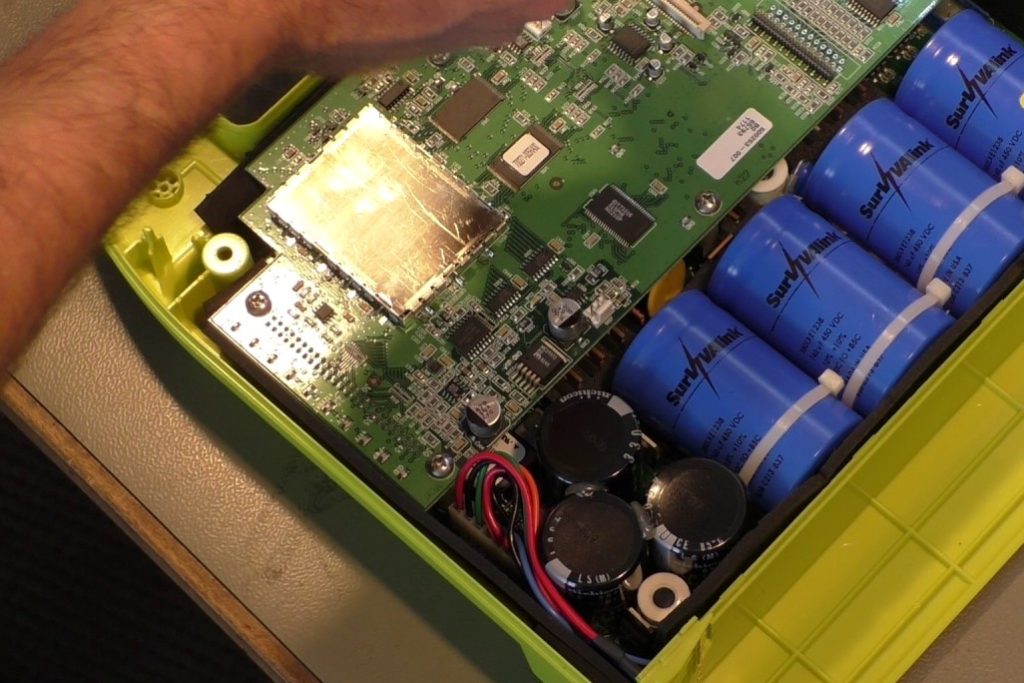
Every device has a processing system or mechanical “brain”. The internal electrical circuit analyses the wave morphology, amplitude, slope, and frequency of a heart rhythm.
Based on the reading, the microprocessor assesses whether shock or CPR is needed first. All the while, it documents the patient’s medical information for healthcare professionals after the incident.
Battery
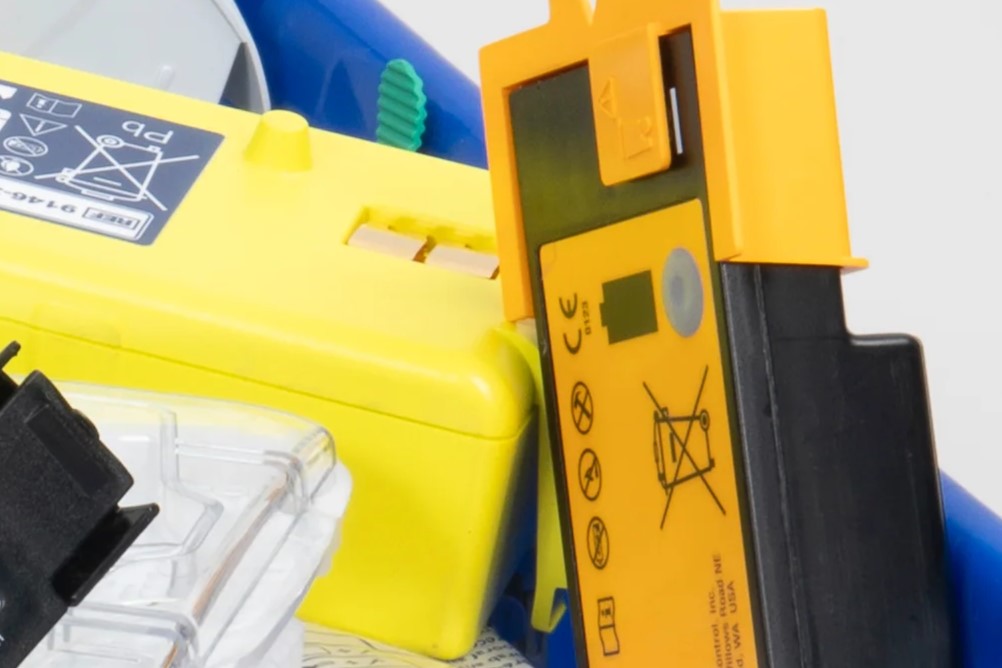
Batteries for AEDs are heavy-duty sources of power that packs a punch. It has to have enough energy to deliver several shocks for at least one patient.
The battery also needs to power the device’s other responsibilities. These include checking the status of the patient’s heart rhythm and other diagnostics. But these batteries will only last a couple of shocks at capacity.
Electrode Pads
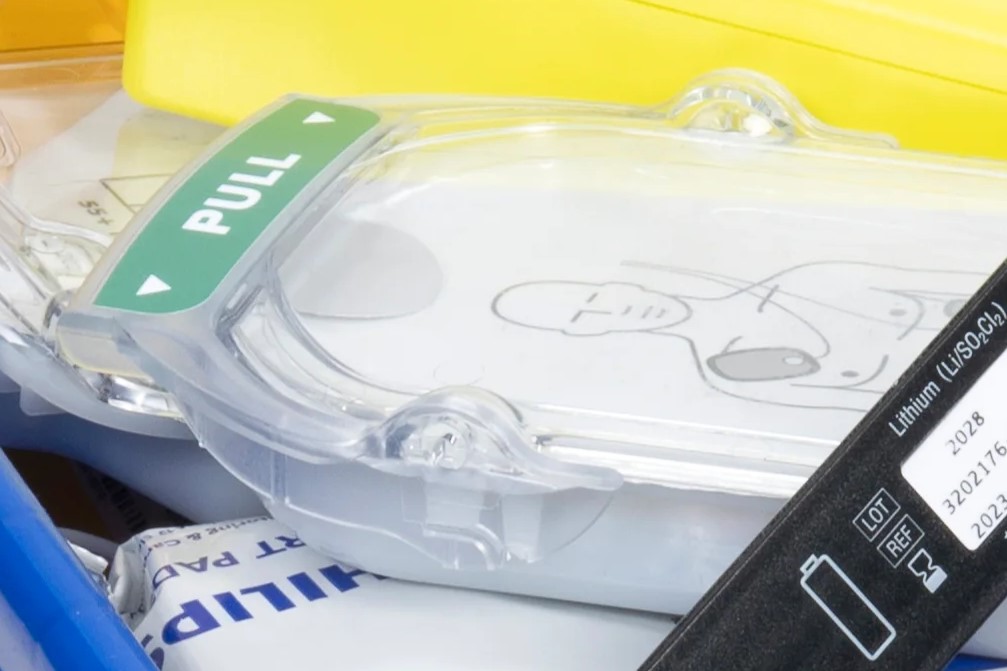
Connected by cables, an AED utilises electrode pads instead of paddles. They stick on the body, one under the collarbone above the right breast and the other below the left chest. Pads like these deliver a reviving shock to the patient.
In addition to administering the shock, these pads also gather information about the patient’s condition. The AED will administer a shock once it determines a need for one.
AED-Ready- How to Keep Your AED Up to Date
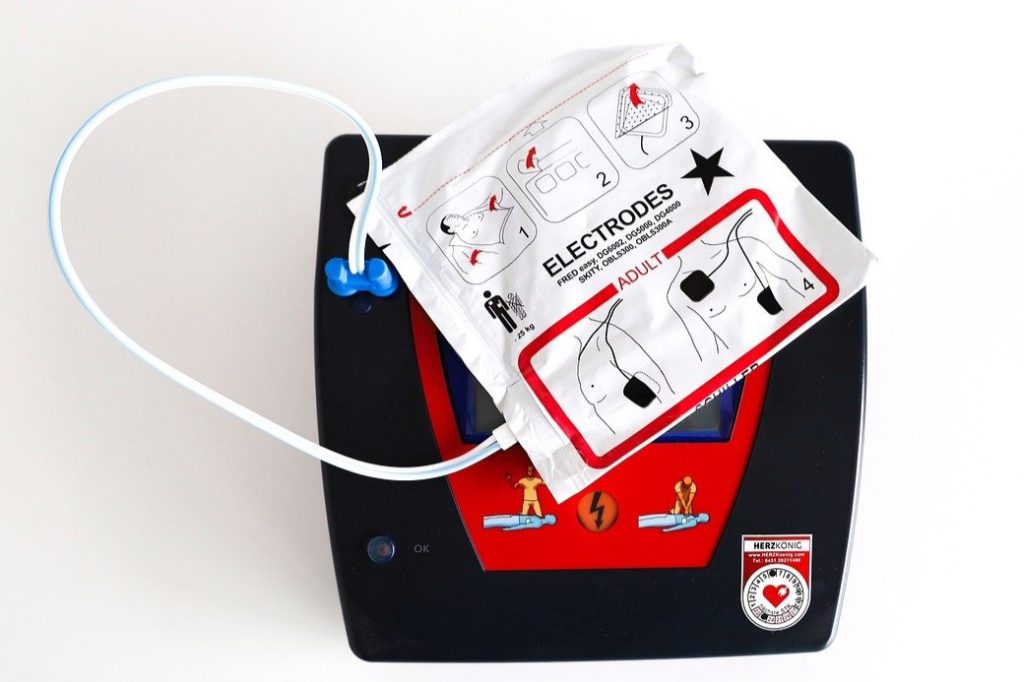
An AED saves lives. It’s best to keep it and its parts up-to-date. A designated inspector should double-check AEDs daily, monthly, and annually. After the logs, then you know which AED parts to change out, like the battery or electrode pads.
Battery
The batteries for AEDs should be usable before the expiry date. Ideally, the installed batteries last for 200+ shocks or four (4) years. Extra uninstalled batteries should be good for five (5) years. It’s imperative to update them for emergencies.
There are higher voltage batteries available for purchase as well. Higher-voltage batteries come in custom sizes with different prizes but can be more expensive than the regular variety.
Electrode Pads
Electrode pads need to be changed often as well. They are single-use because their ability to transfer electrical pulses won’t be as effective. For brands like Philips, they have interchangeable pads between their different models.
Some electrode pads are original or branded based on the make of the AED. If you’re looking for a cheaper but still just as good alternative, compatible or aftermarket pads are available. Aftermarket pads can be at least 40% more affordable than branded ones.
Why Do You Need to Change Your AED Every Once in a While?
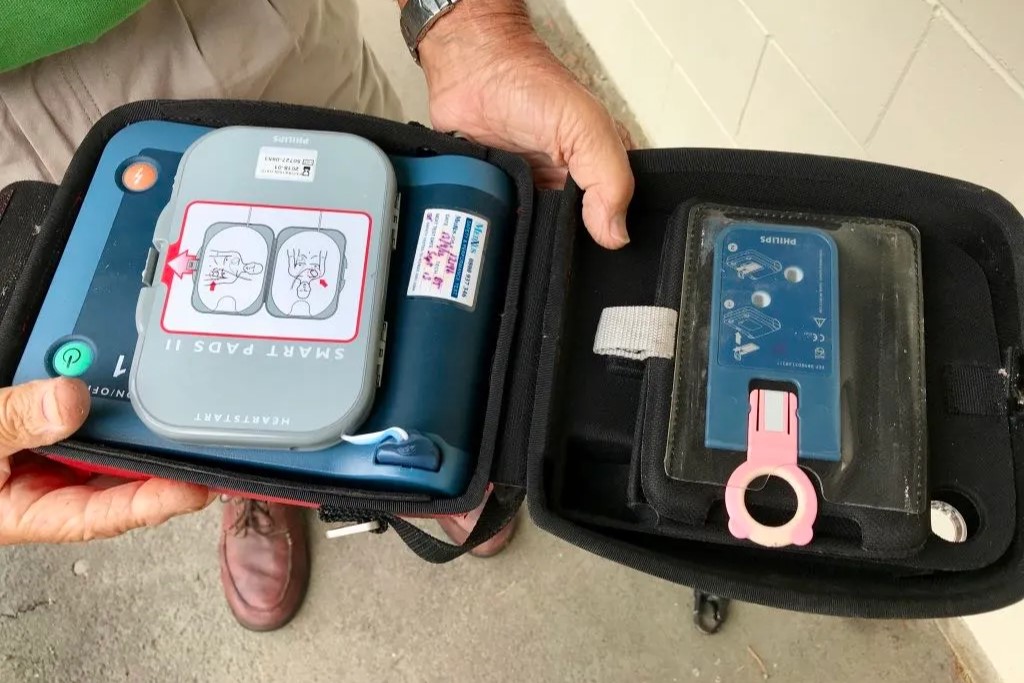
As your company grows, your AEDs should as well. An AED is fully functional when it’s in its optimal state. Over time, companies make new versions of the device.
Your old models could have less and less compatible parts and accessories. It is easier to have replacement parts when you change your AED as often as possible. It’s a good thing that AEDs are easy to change and replace.
Some clinical & first aid supplies, like massage chairs, are checked and certified by lab techs. Luckily, this does not apply to AEDs. These can be replaced by regular people so you won’t have a problem. Typically, replace your AEDs every eight (8) years.

